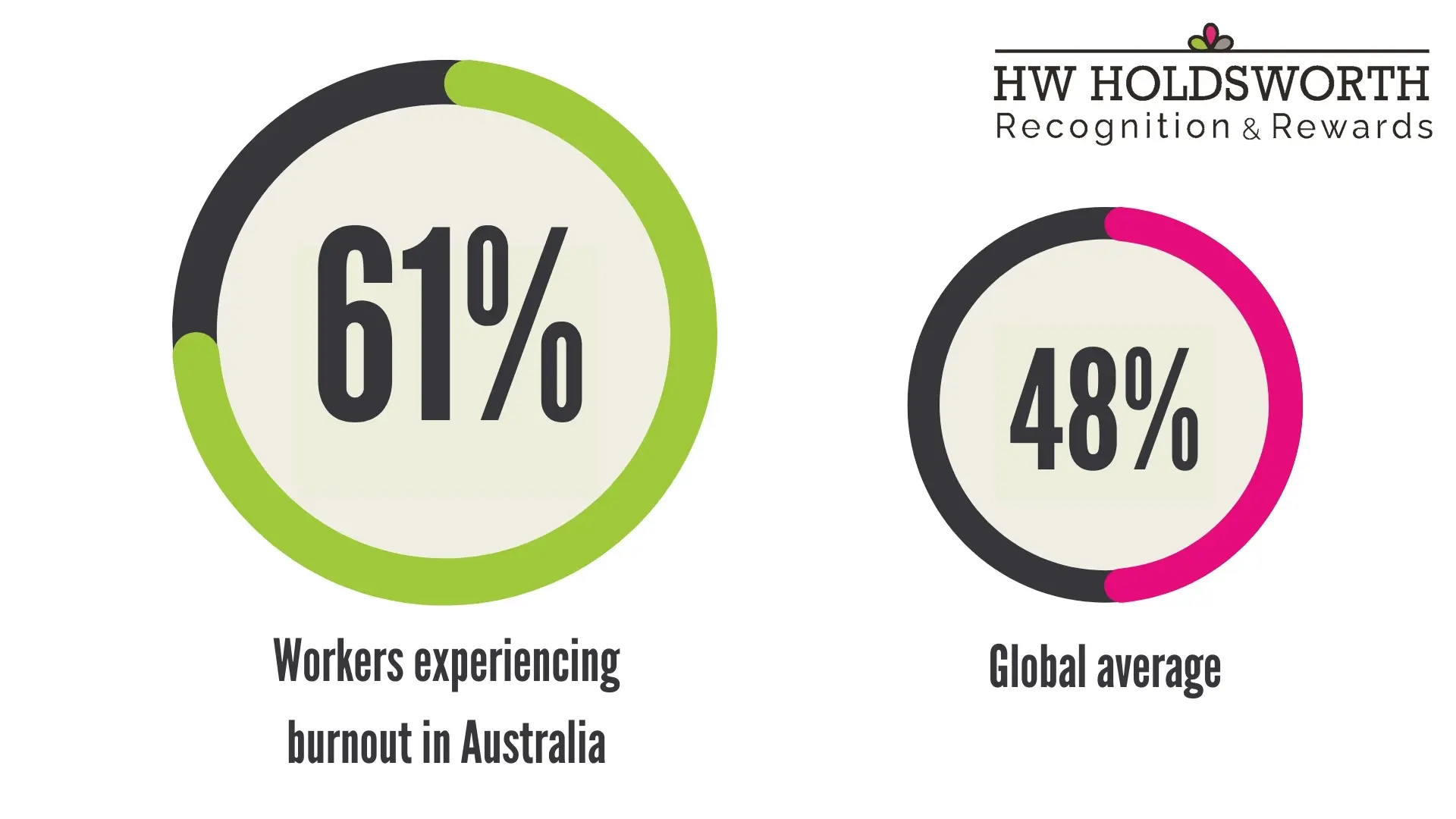Employee Wellbeing
The Importance of Employee Wellbeing
Employee wellbeing is no longer a ‘nice-to-have’—it’s a fundamental business priority. With workplace stress and burnout on the rise, HR professionals are increasingly looking for strategies that not only support employees but also drive engagement, productivity, and retention.
According to a Microsoft survey, 61% of workers in Australia experience burnout, compared to the global average of 48%.
HR professionals can help create a supportive, engaged, and productive workforce. Investing in employee wellbeing isn’t just good for employees—it’s good for business.

Employee Wellbeing Strategies
How is your organisation prioritising employee wellbeing?
Mental Health Wellbeing Australia has some great resources on preventing burnout in the workplace, and we've included some of their suggestions of what employers can do to help in our list below.
HR professionals and managers can take several steps to incorporate wellbeing-focused initiatives to improve workplace employee wellbeing:
Introduce a recognition program
Encourage managers and employees to regularly acknowledge each other's contributions, and foster a culture of appreciation.
Inadequate reward and recognition have been identified as a psychosocial hazard in the Australian workplace. Implementing effective employee recognition programs is therefore essential in minimising work-related stress. This includes providing regular, specific, and positive feedback on task performance, and formally or informally congratulating workers on a job well done. Listening to workers' needs and concerns is also a meaningful form of recognition.
Promote empathetic leadership & wellbeing check-ins
Train managers to engage with their teams effectively, demonstrate empathy, and support mental health literacy.
Encourage managers to monitor employee wellbeing with wellbeing surveys or one-on-one “Connect” meetings between employees and managers to discuss personal wellbeing and non-work-related concerns.
Provide wellbeing benefits
Offer discounts on gym memberships, health services, and mental wellness resources to support employees' overall wellbeing.
For example, Commonwealth Bank provides employees with subsidised fitness programs and mental health support through Employee Assistance Programs (EAPs).
Meanwhile, Medibank extends its commitment to wellbeing by offering staff discounts on private health insurance and preventive health programs.
Foster a culture of gratitude
Implement simple yet effective practices like gratitude boards or morning meetings where employees can express appreciation for their colleagues.
When employees feel appreciated for their contributions, they experience greater job satisfaction, motivation, and a sense of belonging.
Australian companies like Atlassian have embraced peer-to-peer recognition programs where employees can publicly acknowledge their colleagues’ efforts.
This culture of appreciation fosters positive relationships and enhances workplace morale.
Equip the workplace with Mental Health First Aiders
Train employees in mental health first aid so they can support colleagues and help reduce stigma around mental health conversations.
One of our clients created Mental Health Champion lapel pins for employees, in their efforts to foster employee wellbeing.
Invest in financial wellbeing
Provide resources or discounts that help employees manage financial stress and reduce anxiety related to money matters.
Companies like PwC Australia have taken proactive steps by providing their employees with financial wellbeing programs, including access to financial advisors and mental health support.
Employee benefits are a great cost-effective way to provide both rewards and wellbeing in the same package.
Encourage work-life balance
Allow flexible scheduling where possible, ensuring employees can balance their professional and personal commitments.
Create safe spaces for open conversations
Encourage discussions around mental health by fostering an open and psychologically safe workplace where employees feel comfortable speaking up.
By implementing these strategies, HR professionals can help create a supportive, engaged, and productive workforce. Investing in employee wellbeing isn’t just good for employees—it’s good for business.
